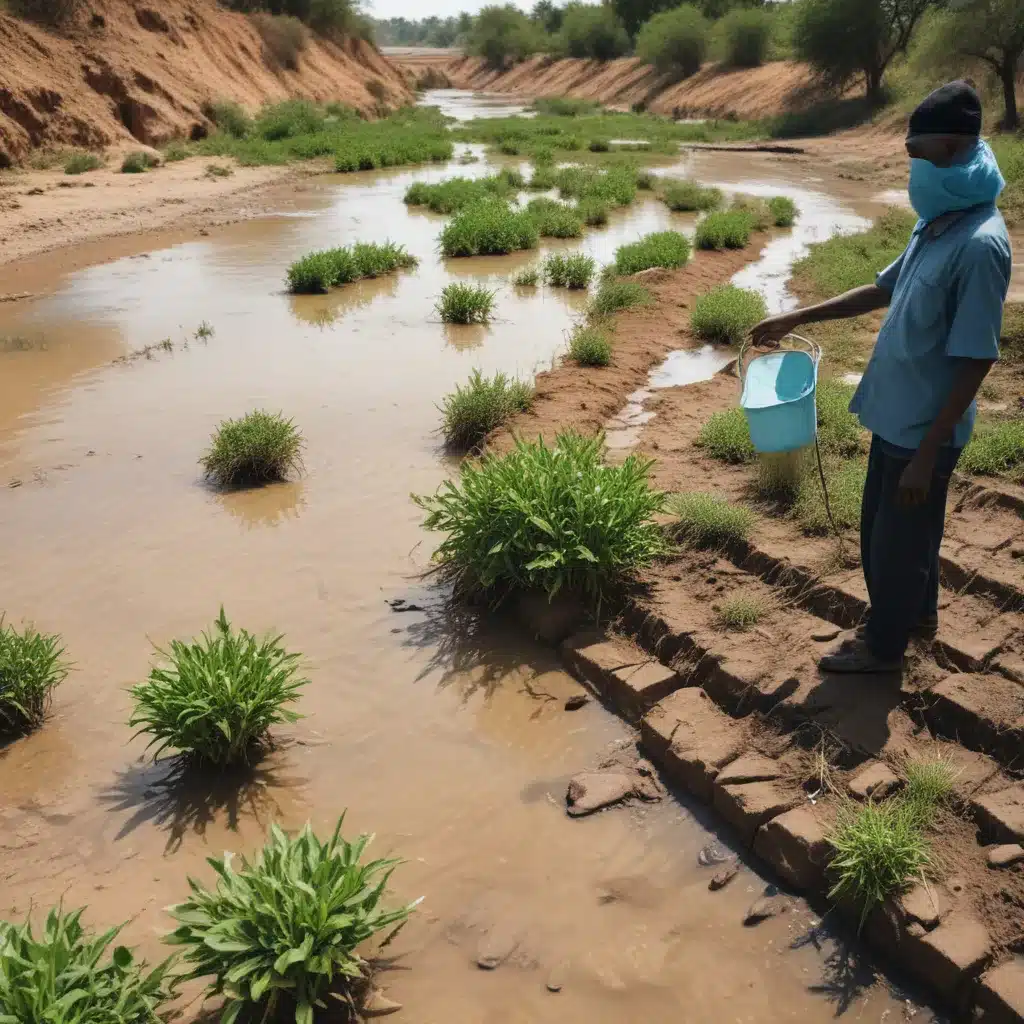
Unlocking the Potential of AI and Big Data in Water and Sanitation
In a world facing the mounting challenges of climate change, the water and sanitation sector has emerged as a critical battleground. As extreme weather events, shifting precipitation patterns, and rising sea levels threaten the availability and quality of this precious resource, the need for innovative solutions has never been more pressing. Enter the transformative power of big data and artificial intelligence (AI) – tools that hold the promise of revolutionizing how we approach water management and community resilience.
The digital revolution has ushered in an unprecedented abundance of data, from satellite imagery to sensor networks and social media feeds. This data tsunami, when harnessed effectively, can provide invaluable insights into the complex dynamics of water systems, enabling us to anticipate and mitigate the impacts of climate change. AI, with its ability to uncover hidden patterns and make data-driven predictions, is emerging as a game-changer in the water and sanitation landscape.
Predicting and Preparing for Disaster Resilience
One of the key areas where big data and AI are making a significant impact is in disaster preparedness and response. Researchers at Texas A&M University, for instance, have developed AI-powered models that can accurately predict the flooding of roads during extreme weather events. By analyzing data from various sources, including traffic cameras, flood gauges, and satellite imagery, these models can identify vulnerable areas and provide critical information to emergency responders and community members.
“Knowing the flooding status of roads can help affected communities avoid flooded streets and aid emergency management agencies in planning evacuations and delivery of resources,” explains Dr. Ali Mostafavi, the Zachry Career Development Associate Professor leading the Urban Resilience.AI Lab.
Similarly, researchers have leveraged location-based data from smartphone devices to monitor hurricane preparedness within communities. By tracking changes in shopping patterns, such as increased visits to grocery stores and pharmacies, they can identify areas that are underprepared for an impending storm. This information allows emergency response managers and public officials to allocate resources more effectively, ensuring that the most vulnerable populations receive the support they need.
Optimizing Water Infrastructure and Resource Management
Beyond disaster resilience, the integration of big data and AI is transforming how we manage water infrastructure and resources. Researchers are developing adaptive AI models that can simulate and predict the impacts of flooding, wildfire, or hurricane events on transportation networks. These models can identify disruptions to critical facilities, such as hospitals and shelters, and suggest alternative routes to maintain access during emergencies.
In the realm of water quality and sanitation, AI-powered systems are emerging as powerful tools for monitoring and optimization. By analyzing data from water sensors, satellite imagery, and other sources, these systems can detect water pollution, identify infrastructure failures, and optimize the operation of water treatment plants. This real-time decision support can lead to more efficient water usage, reduced energy consumption, and improved public health outcomes.
Empowering Communities through Equitable Data-Driven Solutions
One of the most promising aspects of integrating big data and AI in the water and sanitation sector is the potential to promote more equitable and inclusive solutions. Researchers have explored the use of satellite imagery and deep learning to rapidly assess the damage to buildings and infrastructure after natural disasters. This capability can help governments and aid organizations allocate resources more effectively, ensuring that marginalized communities receive the support they need.
Moreover, studies on post-disaster recovery patterns have revealed important insights about the varying resilience of different socioeconomic groups. By understanding the factors that influence the ability of low-income and minority populations to evacuate, relocate, and return to their homes, policymakers and community leaders can develop targeted interventions to address these disparities.
Cultivating Collaborative Partnerships for Sustainable Impact
The successful deployment of big data and AI-driven solutions in the water and sanitation sector requires a collaborative approach that brings together diverse stakeholders, from government agencies and research institutions to community-based organizations and the private sector.
“Our vision is to create a future where data science and AI technologies are leveraged to predict, prepare for, and equitably respond to natural hazards, enabling us to mitigate their impact on communities,” says Dr. Mostafavi.
This vision is being realized through partnerships with entities such as the Texas Department of Emergency Management, which have provided valuable use-case projects to test and refine the AI-based models developed by the Urban Resilience.AI Lab. By fostering these collaborative efforts, the water and sanitation sector can harness the power of big data and AI to build climate-resilient communities that prioritize the needs of the most vulnerable.
Toward a Sustainable and Inclusive Water Future
As the world grapples with the escalating challenges of climate change, the water and sanitation sector stands at a crucial juncture. The integration of big data and artificial intelligence offers a transformative pathway, unlocking new possibilities for anticipating and adapting to the impacts of extreme weather events, optimizing resource management, and promoting equitable solutions.
By embracing this digital revolution, we can empower communities to build resilience, safeguard public health, and ensure the sustainable stewardship of our most precious resource – water. The time to harness the power of these cutting-edge technologies is now, as we collectively strive to create a future where water security and climate resilience go hand in hand.
To learn more about the latest advancements in water and sanitation, visit Joint Action for Water.

